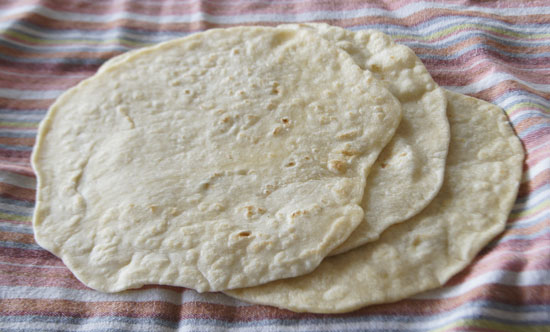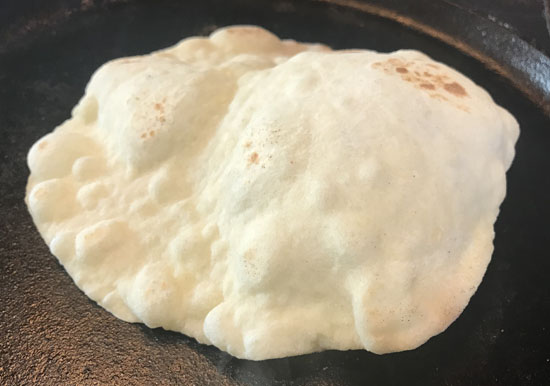
Cream puffs are little pillowy clouds of pastry that can be filled with wonderful things. Like strawberries and whipped cream! Way back when, I found a recipe for Strawberry Cream Puffs and liked the recipe so much that I hand-wrote it on a recipe card.
I got it in my mind to make cream puff shells this week – for Valentine’s Day dessert. Pretty red strawberries, very lightly sweetened, mixed with cool whip, inside puffy shells, perhaps with a little thin chocolate syrup drizzled on top . . . a dessert worthy of Valentine’s Day but, actually, light in carbohydrates. Why? Because cream puff shells are made from flour, butter, and eggs. There is only 1/2 cup of flour divided amongst 8 cream puffs, so about 50 flour calories per serving. Yes, there is a lot of butter, but . . . actually, only 1/2 tablespoon per serving, or another 50 calories. I can live with these values on the semi-low-carb diet that we are striving to pursue.
So, cream puffs. Where is my recipe? I search first in my recipe box. The recipe card is not there. I must have left it somewhere else, perhaps tucked in a cook book. I can’t find it in any books, though. Maybe I transferred the recipe to a document? I searched my “desserts” document – it is not entered there. I had almost given up, when I decided to do a wider search. Luckily I found my notes on and a recipe for cream puffs in my “appetizers” document. Below is what I wrote to myself a few years ago.
“The recipe in the Joy of Cooking (p. 597) was probably my old standby, and/or the Strawberry Cream Puffs recipe on the recipe card, until I tried the recipe below in 2010. The Joy of Cooking recipe is 1 C flour, 1 C water, 1/3 C butter plus 4-5 eggs.
“In 2010, I went to cooksillustrated.com and found their recipe, a recipe that exactly measures the eggs, and gives a temperature for the water/flour/butter mixture, and uses the Cuisinart. I tried it and liked how the cream puffs turned out. This recipe eliminates the long hand-beating of the eggs into the water/flour/butter mixture. What a relief to toss the hand-beating task! It also uses the half sheet pans and parchment that I just found out about in a recent CSR class [this dates to mid-2000s]. Although, be aware that this method makes a mess of the food processor bowl, so plan to put it in the dishwasher. I made one and a half sheet pans of the puffs, dropping by teaspoonfuls, rather than piping with a pastry bag. Never have got one of those! [Have one now!]”
Below is my new version of the Cooks Illustrated recipe. It is almost the same as the published one, but I eliminated the step that dries the cooked cream puffs in the oven. The puffs do not seem not wet inside so I skip that step.
Note: Cream puff pastry (actually, cream puff paste) is the same as Pate a Choux. (See From Julia Child’s Kitchen, pages 548-550.)
Cream Puffs, adapted from this recipe: cooksillustrated.com
- 2 eggs
- 1 egg white
- 5 tablespoons butter, cut into chunks
- 1 ounce whole milk (2 tablespoons)
- 3 ounces water (6 tablespoons)
- 1 1/2 teaspoon granulated sugar
- 1/4 teaspoon salt (use less if using salted butter)
- 1/2 cup flour
Heat the oven to 425˚. You need it hot when you are ready to put the pan of puffs in the oven. Also prepare a half sheet pan by placing a piece of parchment paper on it.
Mix together the 2 eggs and the egg white in measuring cup. If it measures more than 1/2 cup, discard the excess. Set aside.
Bring butter, milk, water, sugar, and salt to boil in saucepan over medium heat. Keep an eye on it, stirring occasionally until it reaches full boil (the butter should be fully melted). Immediately remove the pan from heat and stir in flour with a wooden spoon until combined and mixture clears sides of pan. This takes a little hard work, but only about a minute. Return the pan to low heat and cook, stirring constantly, using a smearing motion, for 3 minutes, until the mixture is “slightly shiny with wet-sand appearance and tiny beads of fat appear on bottom of saucepan”. If you have one, use an instant-read thermometer to check the temperature of this dough – it should get to 175 to 180˚.
Immediately transfer the hot dough mixture to a food processor. Process for 10 seconds to cool slightly. With machine still running, gradually add the eggs in steady stream (takes less than a minute). When all eggs have been added, stop the machine and scrape down sides of bowl. Then, process for about 30 seconds until a smooth, thick, sticky paste forms.
These are ready to bake immediately. Drop the dough onto the parchment-lined baking sheet. For large puffs, I make 8; you can also make a dozen or so smaller puffs. You can used this same dough to make elongated puffs for eclairs.
The best way to form cream puffs is by using a pastry bag. I do own one of these now, but haven’t yet used it for puffs. Sounds like a lot of mess to clean the pastry bag after use! But I am sure the puffs or eclairs would be a lot prettier than my free-form ones.
Bake 15 minutes in the 425˚ oven (do not open oven door during this cooking time). After these 15 minutes, reduce the oven temperature to 375˚. Continue to bake for another 8-10 minutes, until golden brown and firm (puffs should not be soft and squishy – you can open the oven at this time to check). Carefully transfer the puff to a wire rack to cool.
The original recipe says to cut a slit in the side of each puff, turn off the oven, prop open the oven door, and leave them for about 45 minutes, until crisp. Julia Child’s recipe also includes this step. I sure it is worth trying, but I am happy with my un-crisped cream puffs. The big free-form, un-dried puffs that I make for stuffing with strawberries and whipped cream are in the photo at top of this page. I find them perfectly acceptable!
You may have leftover puffs. From the original recipe: “Cooled puffs can be stored at room temperature for up to 24 hours or frozen in zipper-lock plastic bag for up to 1 month. Before serving, crisp room temperature puffs in 300-degree oven 5 to 8 minutes, or 8 to 10 minutes for frozen puffs.”




